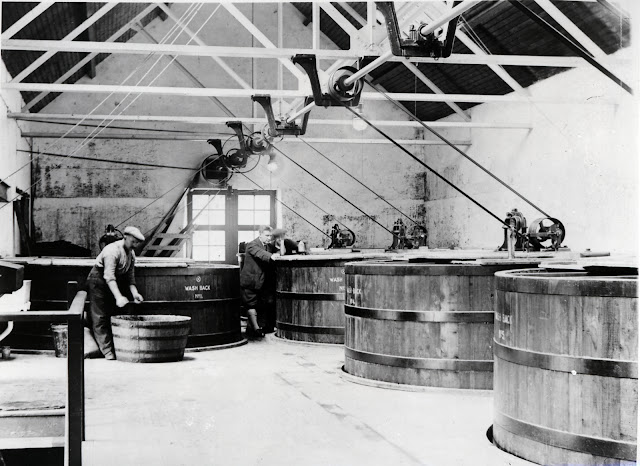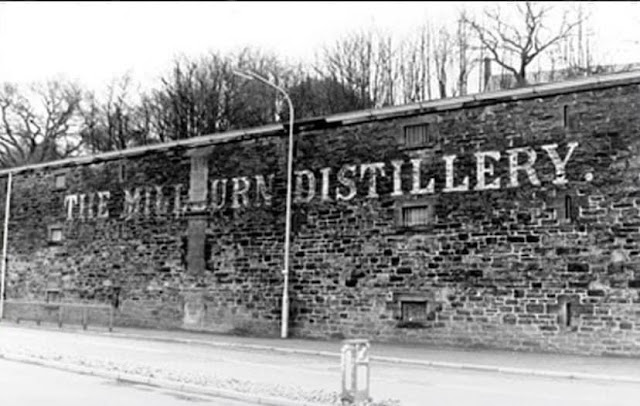Millburn Distillery Wash backs 1923
My thanks to the Diageo Archives for providing this photograph - an extremely rare look into Millburn distillery.
Taken circa 1923, this shows 4 wash backs and my research so far confirms that Millburn only ever had 4 in total - so this is your lot. They were made from Scottish Larch and each had a capacity of 18,000 litres.
If indeed this is 1923 and there's no reason to doubt the date from Diageo, this would be after the damaging fire in 1922, which I'll be investigating in due course as part of this Millburn project. We know that Charles A. Doig oversaw the restoration of the distillery in 1922 as well. How badly were the wash backs and the room damaged by the event? In this photograph the walls do look aged, but the roof structure, wash backs and floor look fairly new and pristine in comparison.
There are several details present; you can see the belt driven system in operation to power the switchers to stop the fermentation from bubbling over. This technology endured in the scotch whisky industry, for fellow Invernessian distillery, Glen Mhor, the switchers were operated this way until 1960. Clearly, if it ain't broke then don't replace it. For Millburn, it is likely the power source in this photo was the old steam engine that remained in use until 1958, when it was replaced by a more modern power source, as confirmed on our Timeline page. The belts at that time would have been removed, or left to hang overhead, forever in a motionless stasis.
We should also take note of at the back of the room, 2 distillery employees checking the fermentation in progress...
One gentleman is clearly too well dressed to be a distillery worker of the period. Could this be the distillery manager? If so, this could be John A. Grant, who was noted to be in charge from 1920 onwards.
We're also aware of who worked at the distillery at this time:
Robert Innes (stillman)
James Fraser (maltman)
William Fraser (maltman)
David Allison (unknown role)
George Innes (cooper)
So, we may have one of more of these employees in the image, captured forever.
The other aspect from this image is the fact of its existence. No one is going to go to the trouble of just photographing the wash back room and leave it as that. My experience with Glen Mhor has shown, when a photographer was employed, it was for a series of images. Either to grace the distillery office walls or to use for promotional activities.
Millburn was acquired by Booth's in 1921, who were mainly involved in gin production. But like blenders of the period, they had a certain style and swagger when it came to advertising their products. Often Millburn was referred to as Booth's distillery, as shown in our Inverness Directory page. Given the status and historical advertising that included Millburn during the 1920s, Booth's were eager to make the most of their acquisition and showcase its status. We'll be delving into those ad's in due course, but it seems reasonable to state that Booth's would have taken a series of photographs of their distillery - especially one after it had been rebuilt due to the fire damage.
If this image exists, then there is every chance that others will as well, let's track them down.




Comments
Post a Comment